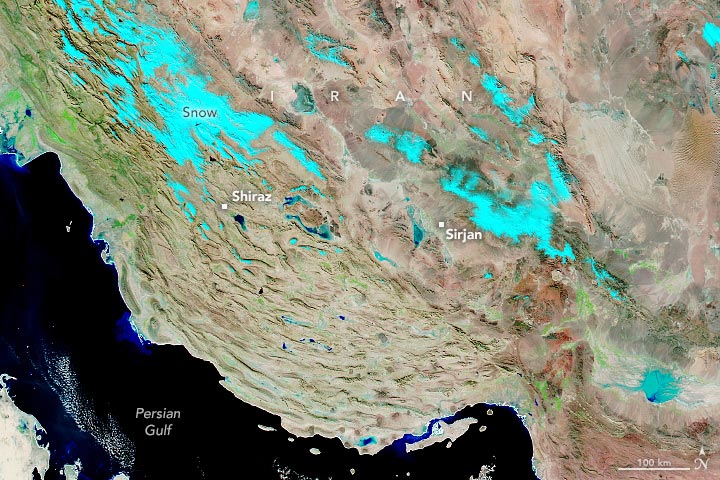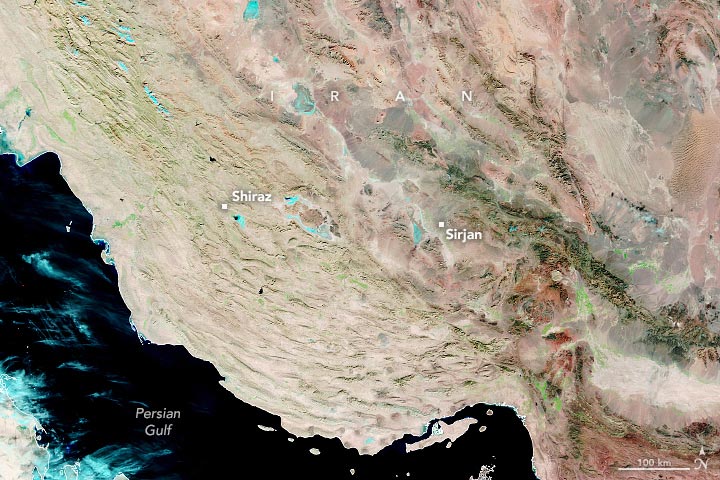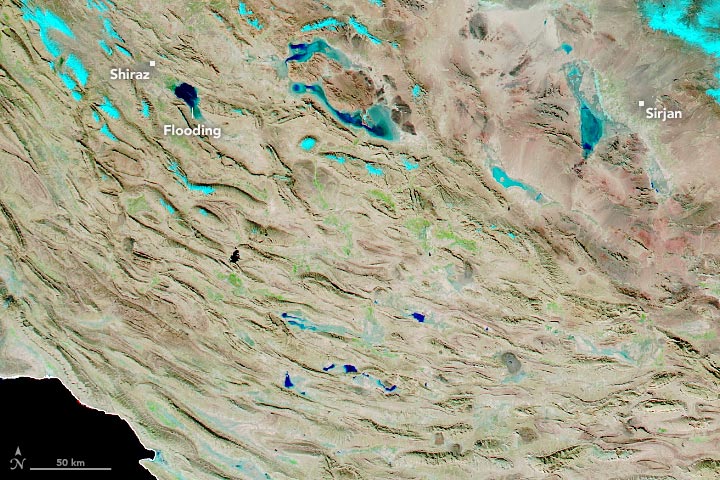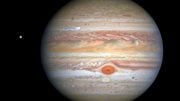
Satellite image showing flooding in southern Iran. It was captured on January 7, 2022, by the Moderate Resolution Imaging Spectroradiometer on NASA’s Aqua satellite.

Satellite image of southern Iran before the storms hit. It was captured on December 14, 2021, by the Moderate Resolution Imaging Spectroradiometer on NASA’s Aqua satellite.
After a year of drought, southern Iran faced floods in early 2022, leading to deaths and extensive damage. Despite this, long-term drought conditions persist as groundwater levels remain depleted.
For much of 2021, drought gripped southern Iran, parching crops, drying wells, and fueling protests over water. The first week of 2022 brought the opposite problem—a series of potent rain and snow storms overwhelmed rivers and unleashed widespread flooding.
The Moderate Resolution Imaging Spectroradiometer (MODIS) on NASA’s Aqua satellite captured imagery of flooding in southern Iran on January 7, 2022. For comparison, the lower image shows the same area on December 14, 2021, before the storms hit. The images are false-color, using a combination of visible and shortwave infrared light (bands 7-2-1) to make it easier to distinguish between land and water. Dry land appears brown; vegetated areas are green. Areas covered by water are dark blue.
News and social media reports showed destructive flood waters that washed out bridges, swept away cars, swamped homes, and inundated farmland. The floods have killed at least 10 people and damaged hundreds of homes and vehicles, according to the Iranian Red Crescent Society.
The recent burst of rain will not necessarily end Iran’s drought or water challenges immediately. While storms can replenish moisture on the surface, it takes a sustained period of wet weather to replenish groundwater, which many people in this region rely on for irrigation. Data collected by the Gravity Recovery and Climate Experiment Follow-On (GRACE-FO) satellites show that reserves of shallow groundwater in the region’s aquifers, though improved, were still low in some parts of southern Iran on January 10, 2021, according to GRACE-FO data published by the University of Nebraska.
NASA Earth Observatory image by Lauren Dauphin, using MODIS data from NASA EOSDIS LANCE and GIBS/Worldview.










Be the first to comment on "Flash Floods Swamp Iran: Burst of Rain Causing Problems After Months of Severe Drought"